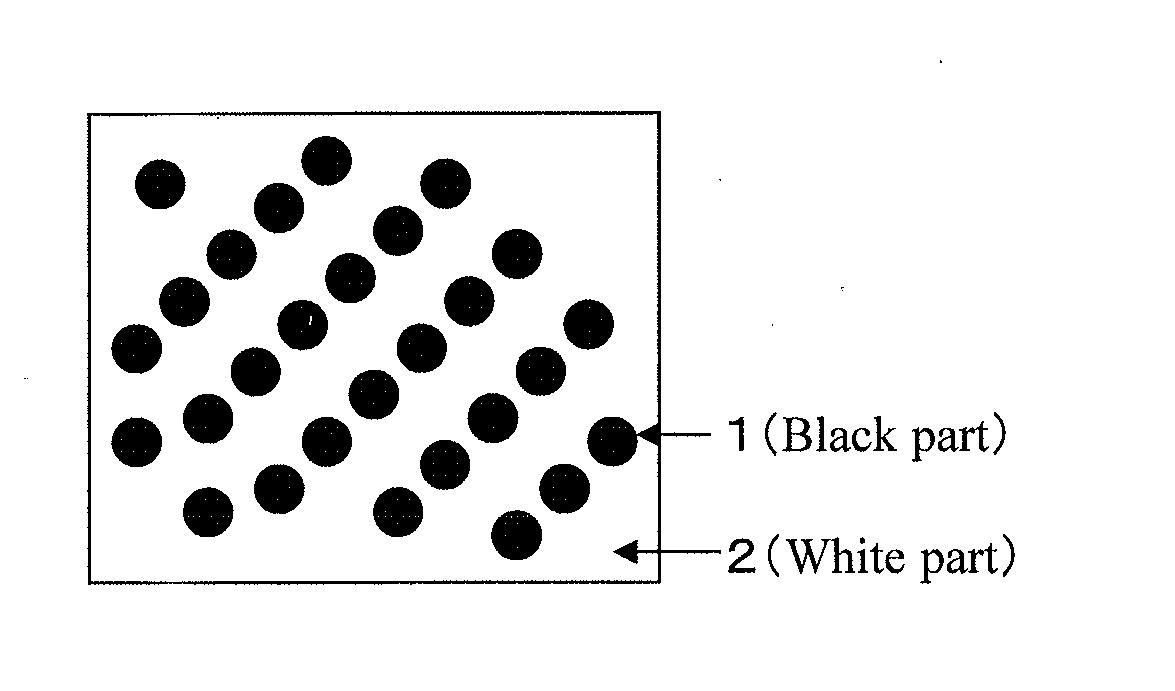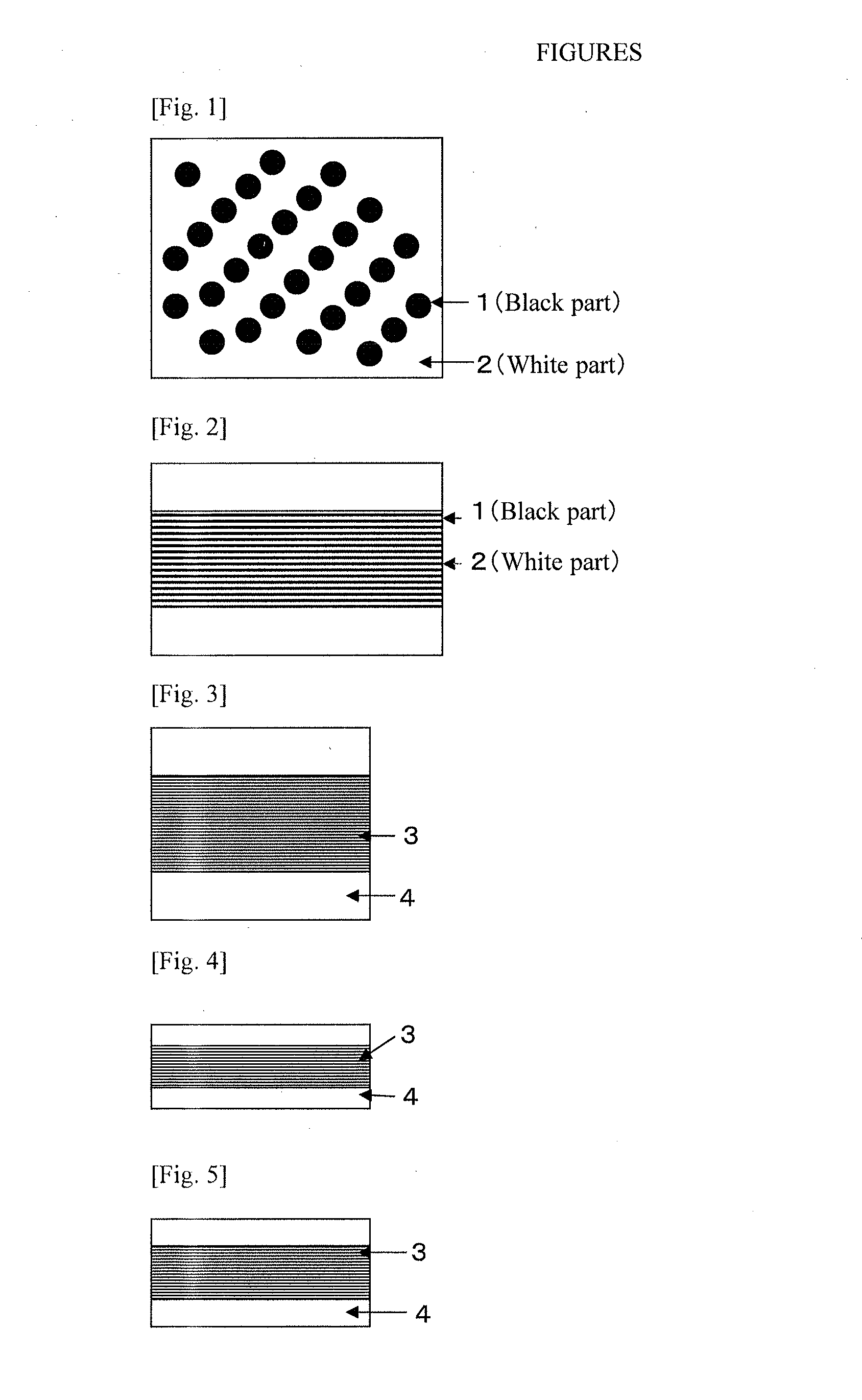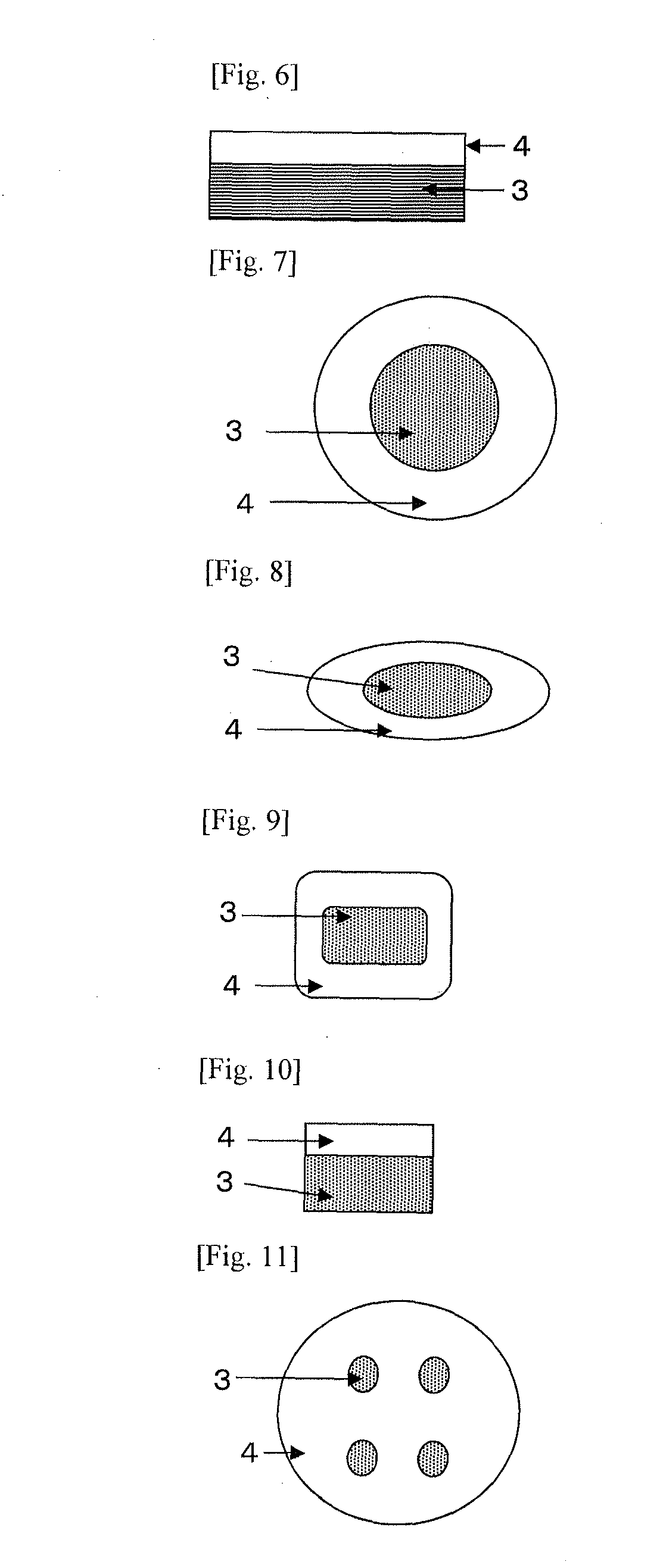Molding material, prepreg, fiber-reinforced composite material, fiber-reinforced composite material laminate, and process for production of fiber-reinforced molding base material
a technology of reinforced composite materials and molding materials, which is applied in the field of molding materials, prepreg fiber-reinforced composite materials, and process for producing fiber-reinforced molding base materials. it can solve the problems of difficult improvement of mechanical characteristics, poor mechanical properties of molded articles, and poor economical efficiency and productivity, and achieve excellent mechanical characteristics. , the effect of easy production
- Summary
- Abstract
- Description
- Claims
- Application Information
AI Technical Summary
Benefits of technology
Problems solved by technology
Method used
Image
Examples
reference example 1
Preparation of Polyphenylene Sulfide Prepolymer
[0357]To an autoclave equipped with a stirrer, 118 kg (1,000 mol) of 47.5% sodium hydrosulfide, 42.3 kg (1,014 mol) of 96% sodium hydroxide, 163 kg (1,646 mol) of N-methyl-2-pyrrolidone (hereinafter, may be abbreviated as “NMP”), 24.6 kg (300 mol) of sodium acetate and 150 kg of ion-exchanged water were loaded, and the resulting mixture was slowly heated to 240° C. over a period of 3 hours at atmospheric pressure under nitrogen gas flow, thereby distilling out 211 kg of water and 4 kg of NMP through a fractionating column. The reaction vessel was then cooled to 160° C. It is noted here that, during this liquid removal operation, 0.02 mol of hydrogen sulfide was released from the system per 1 mol of the loaded sulfur component.
[0358]Next, 147 kg (1,004 mol) of p-dichlorobenzene and 129 kg (1,300 mol) of NMP were added and the reaction vessel was hermetically sealed under nitrogen gas. The reaction system was heated to 270° C. at a rate o...
reference example 2
Preparation of Polyphenylene Sulfide Prepolymer 1
[0367]To an autoclave equipped with a stirrer, 16.54 kg (140 mol) of 47.5% sodium hydrosulfide, 5.92 kg (142 mol) of 96% sodium hydroxide, 22.88 kg (232 mol) of N-methyl-2-pyrrolidone (hereinafter, may be abbreviated as “NMP”), 3.44 kg (42 mol) of sodium acetate and 21 kg of ion-exchanged water were loaded, and the resulting mixture was slowly heated to about 240° C. over a period of about 3 hours at atmospheric pressure under nitrogen gas flow, thereby distilling out 30 kg of water and 550 g of NMP through a fractionating column. The reaction vessel was then cooled to 160° C. It is noted here that, during this liquid removal operation, 0.02 mol of hydrogen sulfide was released from the system per 1 mol of the loaded sulfur component.
[0368]Next, 20.6 kg (140.6 mol) of p-dichlorobenzene and 18 kg (182 mol) of NMP were added and the reaction vessel was hermetically sealed under nitrogen gas. The reaction system was heated to 270° C. at ...
reference example 3
Preparation of Polyphenylene Sulfide Prepolymer 2
[0374]To an autoclave equipped with a stirrer, 1.8 kg (7.5 mol) of sodium sulfide nonahydrate, 15.6 g (0.375 mol) of 96% sodium hydroxide, 77.7 kg (777 mol) of NMP and 1.13 g (7.65 mol) of p-dichlorobenzene were loaded, and the reaction vessel was hermetically sealed under nitrogen gas.
[0375]The reaction system was heated with stirring at 240 rpm from room temperature to 200° C. over a period of about 2 hours. Subsequently, the reaction system was further heated to 220° C. at a rate of 1.0° C. / min and kept at this temperature for 10 hours. Thereafter, the reaction system was cooled to around room temperature to yield a slurry (Sd). This slurry (Sd) in an amount of 80 kg was diluted with 320 kg of ion-exchanged water, and the resultant was stirred at 70° C. for 30 minutes and then filtered through a glass filter having an average pore size of 10 to 16 μm. The thus recovered solid component was dispersed in 80 kg of ion-exchanged water,...
PUM
| Property | Measurement | Unit |
|---|---|---|
| wt % | aaaaa | aaaaa |
| mol % | aaaaa | aaaaa |
| temperature | aaaaa | aaaaa |
Abstract
Description
Claims
Application Information
 Login to View More
Login to View More - R&D
- Intellectual Property
- Life Sciences
- Materials
- Tech Scout
- Unparalleled Data Quality
- Higher Quality Content
- 60% Fewer Hallucinations
Browse by: Latest US Patents, China's latest patents, Technical Efficacy Thesaurus, Application Domain, Technology Topic, Popular Technical Reports.
© 2025 PatSnap. All rights reserved.Legal|Privacy policy|Modern Slavery Act Transparency Statement|Sitemap|About US| Contact US: help@patsnap.com



